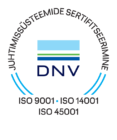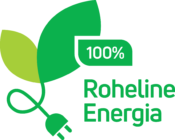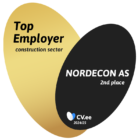“The cooperation with AS Nordecon, the general contractor of the construction of D-Terminal has been very successful, and all the problems that have arisen during the construction of the complex site have been solved quickly and professionally. It should also not be forgotten that construction work is carried out in the terminal building serving passengers on a daily basis. Today, we with the first stage of construction we have arrived at the point where the finishing touches are being made in the building, the construction of the facade is being completed, and the technical systems are being adjusted” said Peeter Nõgu, Head of Infrastructure Development at the Port of Tallinn.
“The Port of Tallinn is a demanding client, to whom we will deliver, at the end of the construction work, not only the completed building, also the 3D geometry of the entire building and together with detailed information. Thanks to very good cooperation with the Port of Tallinn we have reached a level where the differences between the house and its model are minimal, and every element of the model has information on it. This means that the use and development of the BIM model is a continuous process: the real model is in constant use by both the builder and eventually by the caretaker of the house,” said Marek Sööt, Chairman of the Board of Nordecon AS. “The BIM implementation model gives the builder the opportunity to better plan the construction process, but also to execute it faster and more efficiently. It gives us the opportunity to test a number of interesting technologies to make sure that what’s happening on the construction site is 100% conforming to the model. "
During the reconstruction of the 4-story (three main floors + one technical floor) D-terminal building, the operational building design documentation and a BIM (Building Information Modeling) implementation model for architecture, building structures, heating, ventilation, cooling, water supply, sewerage, low current and automation is under development.
Monolithic intermediate ceilings, which are supported by steel beams, have been designed for the ground floor of the section to be reconstructed of the existing D-Terminal. The D-terminal to be soon completed has comfortable and spacious waiting areas for passengers, adding significant new seating options. The terminal will also have more space for cafes and shopping. New facilities include a children’s area and a separate lounge for more demanding travelers. The D-terminal is used by passengers of the Tallink shipping company.
Together with the terminal building, the utility networks and substations serving the building will be reconstructed. The reconstruction of D-terminal is co-financed by the European Union under the Connecting Europe Facility project TWIN-PORT 2 No 2014-EU-TM-0087-M.









